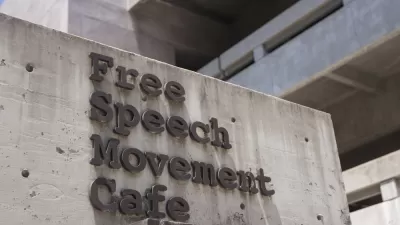Surprising insights on messaging from the front lines of NIMBY.
By Amy Clark
"I was absolutely shocked. It was like an ambush."
The disbelief is clear in Nancy Hughes Moyer's voice even now, nearly five years after she first faced the full force of community opposition in Chicago. It was February 2010, and the organization she directs, Volunteers of America Illinois, was two weeks away from asking the city council for its vote of approval on a site for Hope Manor, what would become 50 supportive apartments for formerly homeless veterans. What Hughes Moyer and her colleagues had thought would be an easy follow-up meeting with a community group to present finished plans turned into, in her words, "an unfettered disaster."
Opposition to housing for military veterans can be hard to fathom. Active and retired service members hold a hallowed place in American culture. They greet their families from overseas during Thanksgiving Day football broadcasts. Nearly 30 million people make the pilgrimage to the National Mall in Washington, D.C., each year to visit the war memorials there. But when it comes to our own neighborhoods, it seems many of us simply don’t want a military veteran living next door.
After two years of work to build the support of community members and the local alderman, who ultimately has the final say over new housing development, Hughes Moyer and her staff had been confident. All parties had been supportive, and no significant neighborhood opposition had surfaced. The alderman himself had recommended the long-vacant lot that had been chosen for the site.
But it was clear from the start of this meeting that misinformation and stigma had infected the conversation...
FULL STORY: Don’t Call Them Homeless Veterans

Planetizen Federal Action Tracker
A weekly monitor of how Trump’s orders and actions are impacting planners and planning in America.

Map: Where Senate Republicans Want to Sell Your Public Lands
For public land advocates, the Senate Republicans’ proposal to sell millions of acres of public land in the West is “the biggest fight of their careers.”

Restaurant Patios Were a Pandemic Win — Why Were They so Hard to Keep?
Social distancing requirements and changes in travel patterns prompted cities to pilot new uses for street and sidewalk space. Then it got complicated.

Platform Pilsner: Vancouver Transit Agency Releases... a Beer?
TransLink will receive a portion of every sale of the four-pack.

Toronto Weighs Cheaper Transit, Parking Hikes for Major Events
Special event rates would take effect during large festivals, sports games and concerts to ‘discourage driving, manage congestion and free up space for transit.”

Berlin to Consider Car-Free Zone Larger Than Manhattan
The area bound by the 22-mile Ringbahn would still allow 12 uses of a private automobile per year per person, and several other exemptions.
Urban Design for Planners 1: Software Tools
This six-course series explores essential urban design concepts using open source software and equips planners with the tools they need to participate fully in the urban design process.
Planning for Universal Design
Learn the tools for implementing Universal Design in planning regulations.
Heyer Gruel & Associates PA
JM Goldson LLC
Custer County Colorado
City of Camden Redevelopment Agency
City of Astoria
Transportation Research & Education Center (TREC) at Portland State University
Camden Redevelopment Agency
City of Claremont
Municipality of Princeton (NJ)





























